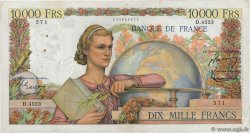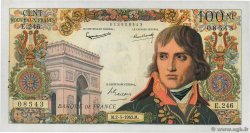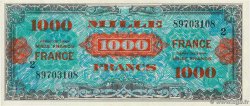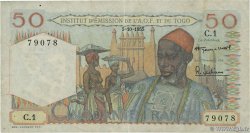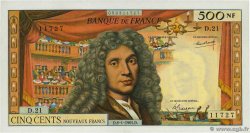fme_1013303 - HOLY ROMAN EMPIRE - PFALZ-VELDENZ - GEORGE JOHN OF VELDENZ Fonte, Coriolan rencontre les femmes romaines
1 000.00 €(Approx. 1170.00$ | 860.00£)
Quantity
Add to your cart

Type : Fonte, Coriolan rencontre les femmes romaines
Date: (1575)
Metal : bronze
Diameter : 148,50 mm
Orientation dies : 12 h.
Engraver SIBER Jonas (1560-4590)
Weight : 328,13 g.
Edge : lisse
Puncheon : sans poinçon
Coments on the condition:
Patine hétérogène avec quelques concrétions autour des reliefs. Belle fonte de métal avec une profusion de détails
Catalogue references :
Musée du LouvreOA 2024 157 mm - MFAH71.56 154 mm - V&A 165 mm
Obverse
Obverse legend : ANÉPIGRAPHE.
Obverse description : Au premier plan, un général à cheval, vêtu et casqué à l'antique ; devant lui, des femmes agenouillées dans une attitude de supplication. Dans le fond, un camp et une grande ville fortifiée. A droite, un soldat en costume polonais ou hongrois. Scène entourée d'une couronne de feuillages.
Reverse
Reverse legend : INCUS.
Commentary
Fonte postérieure à l’original.
L’exemplaire du Musée du Louvre a fait partie de la collection Roland Mathieu-Meusnier, dont il a fait don en 1868. Le musée identifie la scène comme La famille de Darius aux pieds d’Alexandre, ou encore comme Reddition d’une ville pour la variante en étain.
Selon le site du Museum of Fine Arts de Huston la médaille aurait été fabriquée en 1575 par Jonas Silber, citoyen de Nuremberg en 1571, maître en 1572, orfèvre de la cour à Heidelberg de 1578 à 1580, puis graveur de monnaies à Dantzig. Le musée identifie la scène comme Coriolan rencontrant les femmes romaines.
Quant au Victoria & Albert Museum, il identifie également la scène comme Coriolan rencontrant les femmes romaines. La médaille aurait été fabriquée en 1580 par Jonas Silber également.
La bibliographie du Musée du Louvre :
- Les donateurs du Louvre, cat. exp. (Paris, Musée du Louvre, 1989), Paris, Réunion des musées nationaux, 1989, p. 268
- Migeon, Gaston, Catalogue des bronzes et cuivres de la Renaissance et des temps modernes, Paris, Librairies-imprimeries réunies, 1904, p. 340, n° 440
- Clément de Ris, Louis, Musée du Louvre. Série C. Notice des objets de bronze, cuivre, étain, fer, etc, Paris, Ch. de Mourgues frères, 1882, p. 29, C. 103
La bibliographie du Victoria & Albert Museum :
- Weber, I: Deutsche, Niederländische und Französiche Renaissanceplaketten 1500-1650 Munich, 1975, pp.263-4, Cat. No. 562
- Inventory of Art Objects Acquired in the Year 1856. In: Inventory of the Objects in the Art Division of the Museum at South Kensington, Arranged According to the Dates of their Acquisition. Vol I. London: Printed by George E. Eyre and William Spottiswoode for H.M.S.O., 1868, p. 43.
- Trusted, Marjorie, ed. The Making of Sculpture. The Materials and Techniques of European Sculpture. London: 2007, p. 68, pl. 110.
Font after the original.
The copy in the Louvre Museum was part of the Roland Mathieu-Meusnier collection, which he donated in 1868.. The museum identifies the scene as The Family of Darius at the Feet of Alexander, or as Surrender of a City for the tin variant..
According to the website of the Museum of Fine Arts in Huston, the medal was made in 1575 by Jonas Silber, citizen of Nuremberg in 1571, master in 1572, court goldsmith in Heidelberg from 1578 to 1580, then coin engraver in Danzig.. The museum identifies the scene as Coriolanus meeting the Roman women.
As for the Victoria & Albert Museum, it also identifies the scene as Coriolanus meeting the Roman women. The medal is said to have been made in 1580 by Jonas Silber as well..
The bibliography of the Louvre Museum: - Donors to the Louvre, cat. exp. (Paris, Louvre Museum, 1989), Paris, Reunion of National Museums, 1989, p.. 268 - Migeon, Gaston, Catalogue of bronzes and coppers from the Renaissance and modern times, Paris, Librairies-imprimeries réunies, 1904, p.. 340, no. 440 - Clément de Ris, Louis, Louvre Museum. C Series. Notice of objects of bronze, copper, tin, iron, etc., Paris, Ch. of Mourgues brothers, 1882, p.. 29, C. 103 The bibliography of the Victoria & Albert Museum: - Weber, I: Deutsche, Niederländische und Französiche Renaissanceplakettten 1500-1650 Munich, 1975, pp. 263-4, Cat. No. 562 - Inventory of Art Objects Acquired in the Year 1856. In: Inventory of the Objects in the Art Division of the Museum at South Kensington, Arranged According to the Dates of their Acquisition. Vol I. London: Printed by George E. Eyre and William Spottiswoode for H. M. S. O. , 1868, p. 43.
- Trusted, Marjorie, ed. The Making of Sculpture. The Materials and Techniques of European Sculpture. London: 2007, p. 68, pl. 110
L’exemplaire du Musée du Louvre a fait partie de la collection Roland Mathieu-Meusnier, dont il a fait don en 1868. Le musée identifie la scène comme La famille de Darius aux pieds d’Alexandre, ou encore comme Reddition d’une ville pour la variante en étain.
Selon le site du Museum of Fine Arts de Huston la médaille aurait été fabriquée en 1575 par Jonas Silber, citoyen de Nuremberg en 1571, maître en 1572, orfèvre de la cour à Heidelberg de 1578 à 1580, puis graveur de monnaies à Dantzig. Le musée identifie la scène comme Coriolan rencontrant les femmes romaines.
Quant au Victoria & Albert Museum, il identifie également la scène comme Coriolan rencontrant les femmes romaines. La médaille aurait été fabriquée en 1580 par Jonas Silber également.
La bibliographie du Musée du Louvre :
- Les donateurs du Louvre, cat. exp. (Paris, Musée du Louvre, 1989), Paris, Réunion des musées nationaux, 1989, p. 268
- Migeon, Gaston, Catalogue des bronzes et cuivres de la Renaissance et des temps modernes, Paris, Librairies-imprimeries réunies, 1904, p. 340, n° 440
- Clément de Ris, Louis, Musée du Louvre. Série C. Notice des objets de bronze, cuivre, étain, fer, etc, Paris, Ch. de Mourgues frères, 1882, p. 29, C. 103
La bibliographie du Victoria & Albert Museum :
- Weber, I: Deutsche, Niederländische und Französiche Renaissanceplaketten 1500-1650 Munich, 1975, pp.263-4, Cat. No. 562
- Inventory of Art Objects Acquired in the Year 1856. In: Inventory of the Objects in the Art Division of the Museum at South Kensington, Arranged According to the Dates of their Acquisition. Vol I. London: Printed by George E. Eyre and William Spottiswoode for H.M.S.O., 1868, p. 43.
- Trusted, Marjorie, ed. The Making of Sculpture. The Materials and Techniques of European Sculpture. London: 2007, p. 68, pl. 110.
Font after the original.
The copy in the Louvre Museum was part of the Roland Mathieu-Meusnier collection, which he donated in 1868.. The museum identifies the scene as The Family of Darius at the Feet of Alexander, or as Surrender of a City for the tin variant..
According to the website of the Museum of Fine Arts in Huston, the medal was made in 1575 by Jonas Silber, citizen of Nuremberg in 1571, master in 1572, court goldsmith in Heidelberg from 1578 to 1580, then coin engraver in Danzig.. The museum identifies the scene as Coriolanus meeting the Roman women.
As for the Victoria & Albert Museum, it also identifies the scene as Coriolanus meeting the Roman women. The medal is said to have been made in 1580 by Jonas Silber as well..
The bibliography of the Louvre Museum: - Donors to the Louvre, cat. exp. (Paris, Louvre Museum, 1989), Paris, Reunion of National Museums, 1989, p.. 268 - Migeon, Gaston, Catalogue of bronzes and coppers from the Renaissance and modern times, Paris, Librairies-imprimeries réunies, 1904, p.. 340, no. 440 - Clément de Ris, Louis, Louvre Museum. C Series. Notice of objects of bronze, copper, tin, iron, etc., Paris, Ch. of Mourgues brothers, 1882, p.. 29, C. 103 The bibliography of the Victoria & Albert Museum: - Weber, I: Deutsche, Niederländische und Französiche Renaissanceplakettten 1500-1650 Munich, 1975, pp. 263-4, Cat. No. 562 - Inventory of Art Objects Acquired in the Year 1856. In: Inventory of the Objects in the Art Division of the Museum at South Kensington, Arranged According to the Dates of their Acquisition. Vol I. London: Printed by George E. Eyre and William Spottiswoode for H. M. S. O. , 1868, p. 43.
- Trusted, Marjorie, ed. The Making of Sculpture. The Materials and Techniques of European Sculpture. London: 2007, p. 68, pl. 110








 Report a mistake
Report a mistake Print the page
Print the page Share my selection
Share my selection Ask a question
Ask a question Consign / sell
Consign / sell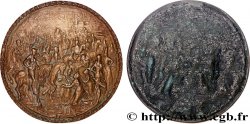
 Full data
Full data
